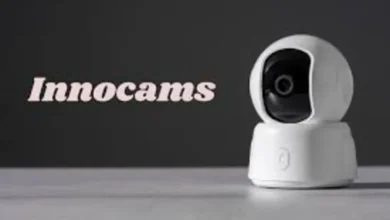In the ever-evolving home security world, technology surprises us with innovative, effective, and discreet solutions. One such solution that has gained significant attention is the light bulb camera. Imagine a security camera that doubles as a functional light bulb, seamlessly blending into your home decor while keeping a watchful eye on your property. In this guide, we’ll explore everything you need to know about light bulb cameras, from how they work to why they might be the perfect addition to your home security system.
What Is a Light Bulb Camera?
A Clever Combination of Light and Surveillance
A light bulb camera sounds precisely like a camera hidden within a light bulb. This device screws into a standard light socket, providing both illumination and surveillance in a single package. The camera is typically positioned in such a way that it can capture a wide-angle view of the surrounding area, all while remaining virtually undetectable.
What makes light bulb cameras particularly appealing is their discreet design. Unlike traditional security cameras that are often bulky and conspicuous, light bulb cameras blend in with the existing lighting fixtures, making them an ideal choice for those who want to monitor their property without drawing attention.
How Do Light Bulb Cameras Work?
Light bulb cameras are designed to be user-friendly, requiring minimal installation. Most models are plug-and-play, meaning you screw the camera into a light socket, connect it to your home’s Wi-Fi, and start monitoring via a smartphone app. These cameras typically feature motion detection, night vision, and real-time alerts, making them a comprehensive security solution.
The camera inside the light bulb captures video footage and sends it to your smartphone or cloud storage, allowing you to view live or recorded video anytime, anywhere. Some models also include a two-way audio feature, enabling you to communicate with whoever is on the other side of the camera.
The Benefits of Light Bulb Cameras
The most obvious benefit of a light bulb camera is its dual functionality. You get both lighting and security in a single device, which can save space and reduce clutter. Additionally, the discreet nature of the camera means it’s less likely to be tampered with or disabled by intruders.
Another advantage is the ease of installation. Unlike traditional security systems that may require professional installation and wiring, light bulb cameras are designed for easy DIY setup. This makes them an attractive option for renters or those who want a quick and hassle-free way to enhance their home security.
Features to Consider When Choosing a Light Bulb Camera
Camera Resolution and Field of View
Image quality is paramount when it comes to security cameras. Most light bulb cameras offer at least 1080p resolution to capture clear video footage. However, some models may offer higher resolutions, such as 2K or 4K, providing even more detailed images.
Another important consideration is the field of view. A wider field of view allows the camera to cover a larger area, reducing the number of cameras needed to monitor a space. For optimal coverage, look for light bulb cameras with at least a 120-degree field of view.
Motion Detection and Alerts
Motion detection is a critical feature in any security camera, and light bulb cameras are no exception. This feature lets the camera detect movement and send alerts to your smartphone, immediately informing you of any suspicious activity.
Some light bulb cameras also offer customizable motion zones, allowing you to define specific areas you want to monitor for movement. This can help reduce false alarms caused by pets or passing cars.
Night Vision and Low-Light Performance
Security doesn’t stop when the sun goes down, so night vision is essential in a light bulb camera. Most models come equipped with infrared LEDs that allow the camera to capture clear video footage in complete darkness. When choosing a light bulb camera, look for models that offer at least 30 feet of night vision range.
Low-light performance is also essential, mainly if the camera will be used in areas with limited lighting. Some cameras use advanced technologies like Starlight sensors, which can capture color video in low-light conditions, providing better detail than traditional infrared night vision.
Storage Options: Cloud vs. Local
Light bulb cameras typically offer two types of storage options: cloud storage and local storage. Cloud storage allows you to store video footage on a remote server, accessed from anywhere with an internet connection. This is a convenient option to ensure your footage is safe, even if the camera is tampered with or stolen.
On the other hand, local storage involves storing footage on a microSD card within the camera. This can be a more cost-effective option, but it also means that you may lose access to the footage if the camera is damaged or stolen. Some cameras offer both options, allowing you to choose the best solution for your needs.
Installation and Setup: How to Get Started
DIY Installation: No Tools Required
One of the most significant advantages of light bulb cameras is their ease of installation. Most models are designed for DIY setup, meaning you won’t need special tools or expertise. Screw the camera into an existing light socket, connect it to your home’s Wi-Fi network, and you’re ready to go.
The smartphone app will guide you through the setup process, including connecting the camera to your Wi-Fi and configuring settings like motion detection and alerts. In most cases, the entire setup process can be completed in under 15 minutes.
Positioning Your Light Bulb Camera
Proper placement is critical to getting the most out of your light bulb camera. Ideally, the camera should be positioned in a location that provides a clear view of the area you want to monitor. Standard placement options include front porches, driveways, and entryways.
Remember that while light bulb cameras are discreet, they are still visible when the light is turned on. This means that intruders can spot the camera if they’re looking closely. To minimize the chances of detection, consider placing the camera in an area less likely to be noticed, such as a recessed light fixture.
Connecting to Your Smart Home System

Many light bulb cameras are compatible with popular smart home systems like Amazon Alexa and Google Assistant. This allows you to integrate the camera with other smart devices in your home, such as intelligent lights, doorbells, and locks. For example, you can set up routines that turn on lights or send alerts to your phone when the camera detects motion.
To connect your light bulb camera to a smart home system, follow the instructions provided by the camera’s manufacturer. This usually involves linking the camera to your smart home account through the smartphone app, after which you can control the camera using voice commands or automation routines.
Are Light Bulb Cameras Right for You?
Pros and Cons of Light Bulb Cameras
Like any security solution, light bulb cameras have pros and cons. On the plus side, they offer a high level of convenience and discretion, making them an excellent choice for those who want to enhance their home security without drawing attention. They’re also easy to install and can be integrated with smart home systems.
However, there are some limitations to consider. For example, because light bulb cameras rely on your home’s Wi-Fi network, their performance may be affected by network speed and connectivity issues. Additionally, the camera’s field of view is fixed, meaning you won’t be able to adjust the angle without physically repositioning the light bulb.
Comparing Light Bulb Cameras to Traditional Security Cameras
When deciding whether a light bulb camera is the right choice, it’s essential to consider how it compares to traditional security cameras. While light bulb cameras offer the advantage of being discreet and easy to install, traditional cameras often provide more advanced features, such as pan-and-tilt functionality and higher resolution.
A light bulb camera may be the perfect fit if you’re looking for a simple, unobtrusive security solution. However, a traditional security camera system might be better if you need more advanced features or cover a larger area.
Conclusion: Enhancing Home Security with Light Bulb Cameras
In a world where home security is becoming increasingly important, light bulb cameras offer a smart and innovative solution. By combining lighting and surveillance in a single device, these cameras provide a discreet way to monitor your property while blending seamlessly into your home’s decor.
Whether you’re looking for a quick and easy way to enhance your home security or are intrigued by the idea of a camera hidden inside a light bulb, these devices are worth considering. With their ease of installation, advanced features, and smart home compatibility, light bulb cameras are a versatile and practical addition to any security system.





2 Comments